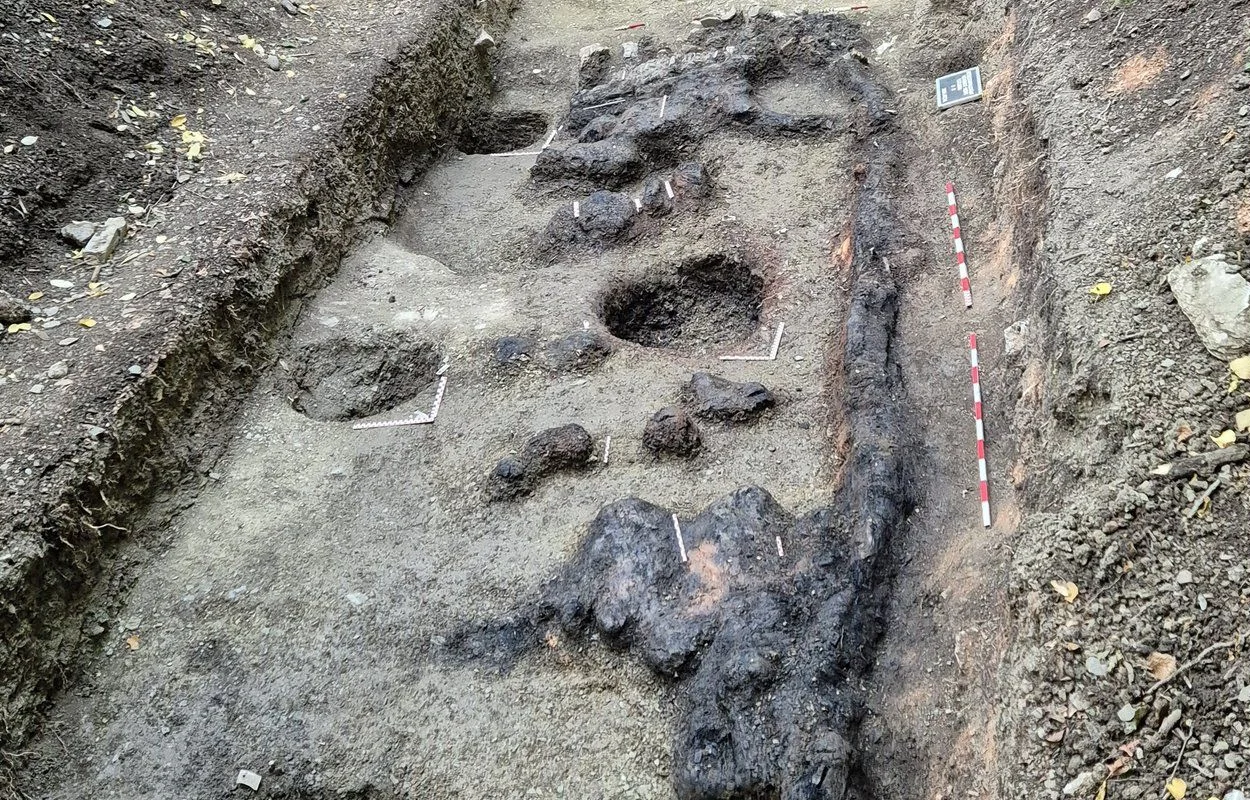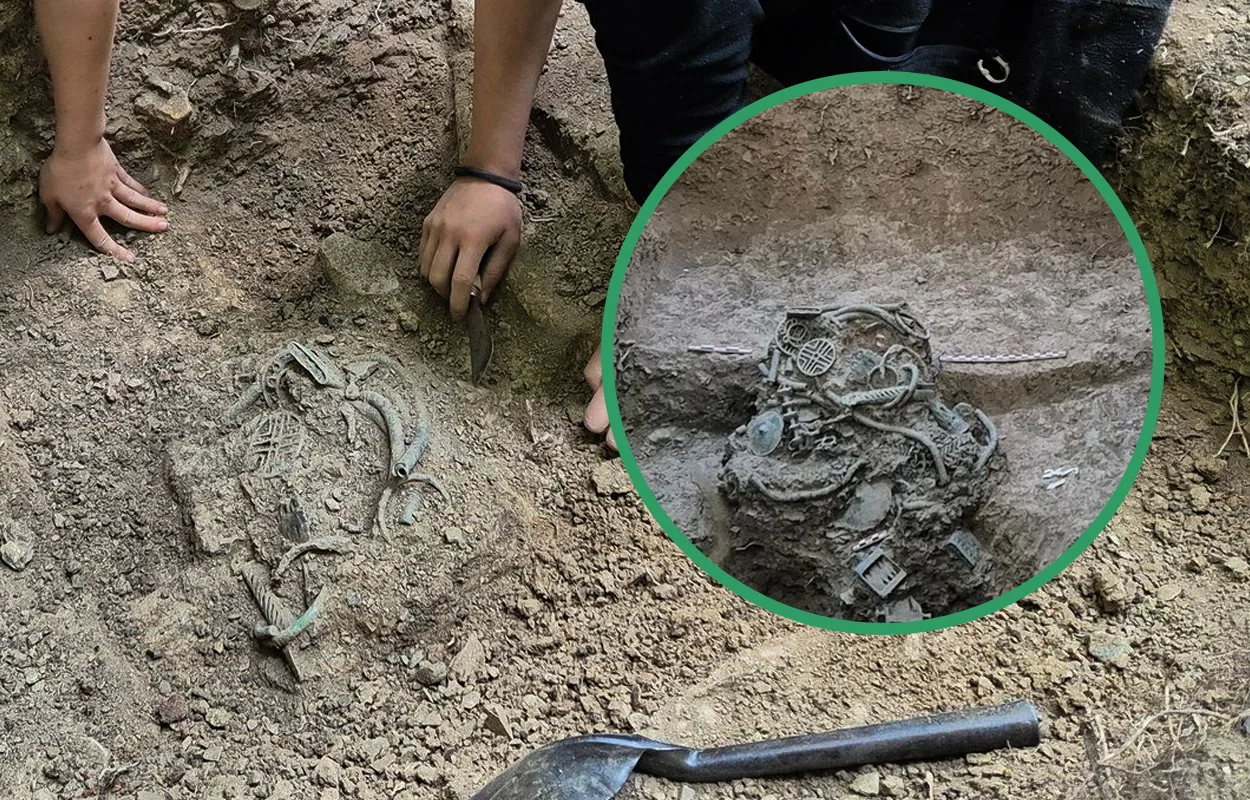Dédestapolcsány-Verebce is an Iron Age hillfort and settlement, situated on the north-western edge of the Bükk Mountains in northern Hungary.
Hillforts were typically built in elevated areas to serve as fortified settlements or defensive structures, offering strategic views of the surrounding landscape.
Archaeological evidence indicates that the site was first settled during the Early Iron Age at the cultural crossroads between several major cultures.
In the 7th century BC, the hillfort was destroyed by Scythian warriors from the Pontic Steppe (modern-day Ukraine and Southern Russia), as indicated by the discovery of hundreds of early Scythian bronze arrowheads, and a destruction layer of charred buildings and melted bronze artefacts.

Since 2020, excavations have uncovered more than 30 deposits containing iron blooms, and hundreds of iron, bronze and gold artefacts (jewellery, tools, daggers, and sickles).
The high concentration of iron blooms suggest that Dédestapolcsány-Verebce was a major ironworking centre, where over 600 objects have been recovered during several seasons.
In September 2024, a multi-national team led by the Institute of Archaeology of the ELTE BTK have found further traces of structures destroyed by the Scythians, in addition to dwellings that contained domestic objects and artefacts placed in deposits for security.
The most significant discovery is a hoard of more than 60 bronze and iron objects, consisting of ornate jewellery and pieces of a horse harness.
Several items in the hoard originate from southeastern European cultures, particularly the Balkan region, offering new insights into trade and cultural interactions, as well as the conflict that ultimately led to the settlement’s destruction.
Header Image Credit : Institute of Archaeology of the ELTE BTK
Sources : Institute of Archaeology of the ELTE BTK







